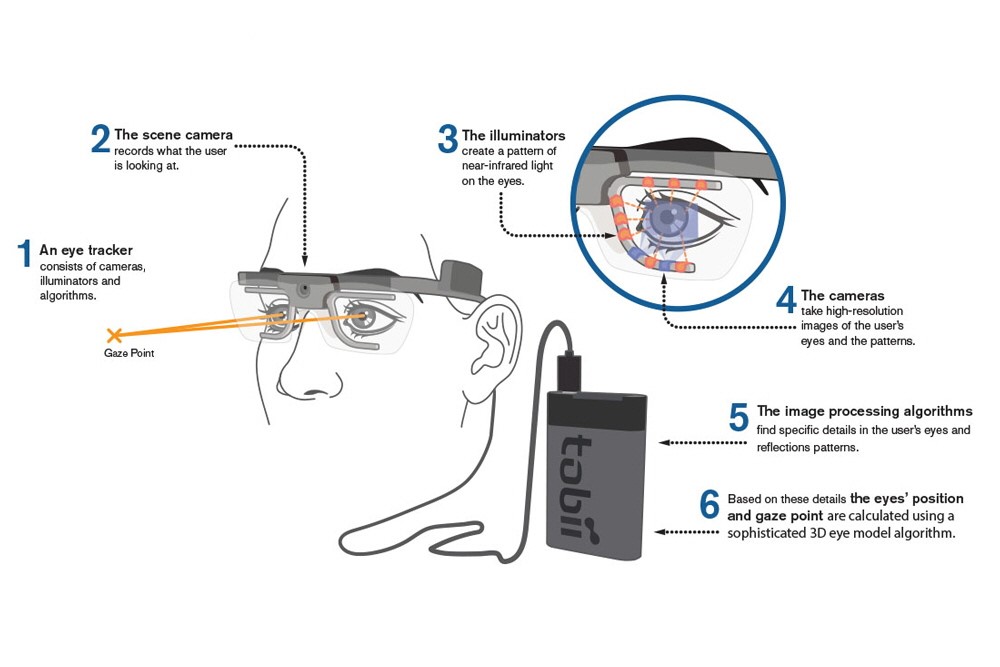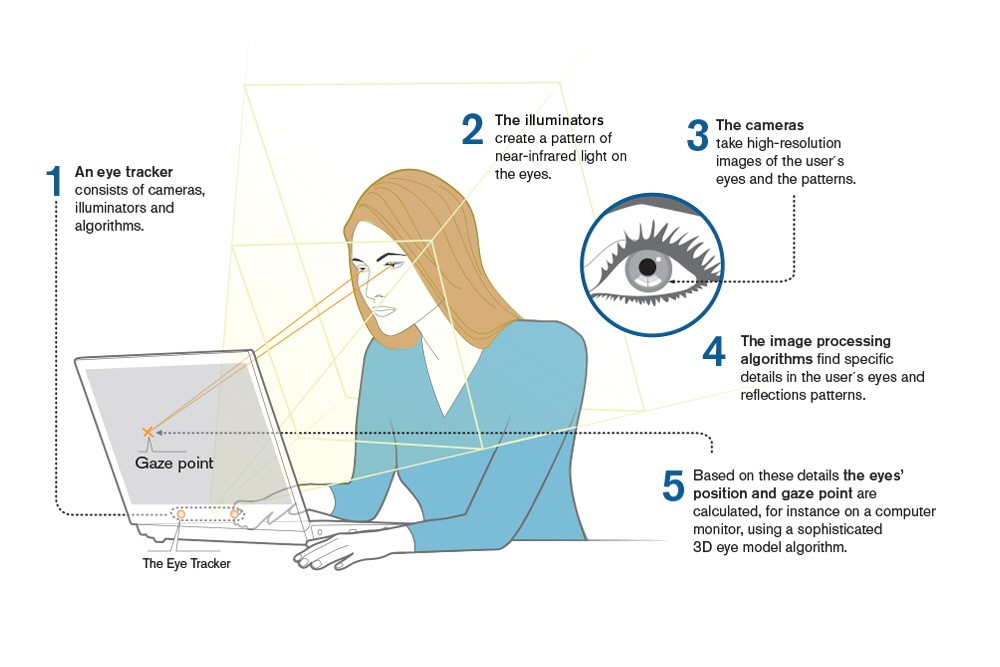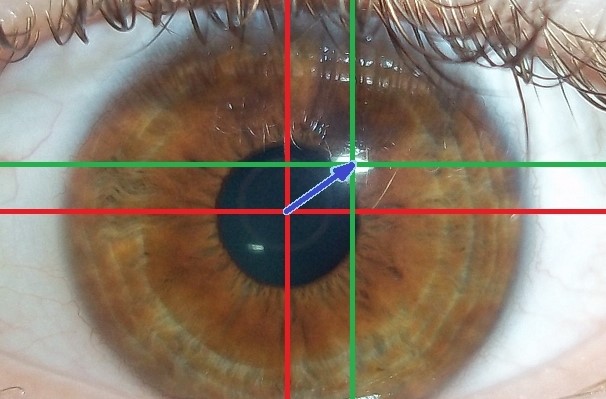
Exhibit 15.3 How the wearable eye tracker works. (Source: Tobii AB).

Exhibit 15.4 How the screen-based eye tracker works. (Source: Tobii AB).
Eye trackers use near-infrared light-emitting diodes
(LEDs) to illuminate the eye while the user looks at a screen or object. Cameras fitted onto
the device then record the reflections of the light, and computer algorithms analyse the
reflections to determine the direction of the gaze. This underlying concept is known as pupil
centre corneal reflection (PCCR) and is commonly used in eye tracking technology (as shown in
exhibits 15.3 and 15.4).
The LED light source emits light at a wavelength outside the visible spectrum,
which is not visible to the user but can be detected by the near-infrared cameras fitted onto
the eye tracker.

Exhibit 15.5 Pupil centre corneal reflection: the vector (blue) formed by reflections from the pupil (red) and
the cornea (green), reveals the direction of the gaze. (Source of image: Wikipedia).
Light that falls on the pupil, enters through the pupil, whereas light that falls
on the cornea outside the pupil, is reflected back. The camera records the pupil as a dark spot,
while corneal reflections are brighter, allowing the computer algorithms to process the vector
(refer to Exhibit 15.5) formed by the reflection from the pupil and the cornea to detect
the direction of the gaze. This is referred to as dark pupil eye tracking.
If the LED light source is coaxial with the optical path, it reflects off the
retina, creating a bright pupil effect similar to red-eye. As with dark spot, in bright pupil eye
tracking the reflection of the pupil is different than the rest of the eye and can be used by
computer algorithms to process the vector formed by the reflection from the pupil and the cornea
which can then be analysed to determine the direction of the gaze.
To track real or virtual 3-dimensional space, the cameras need to observe and
combine the gaze from both eyes. Additionally, because our eyes are not identical in size, shape,
or structure, a simple calibration procedure is required before use to ensure accurate tracking.